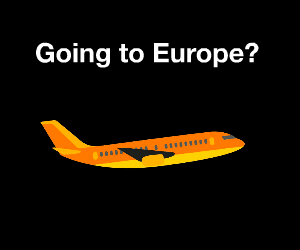
Why Roaming Still Matters: How International Usage Drives Telco Profits in 2025
Let’s be honest—when’s the last time you thought about “roaming” as anything more than that annoying setting you quickly turn off before a flight? For most of us, roaming feels like an outdated concept from the early smartphone days, when we’d land in another country and immediately panic about absurd charges for checking an email. Roaming revenue
But here’s the thing: roaming is not only alive in 2025, it’s thriving—and more important than ever for mobile network operators.
Despite the rise of travel eSIMs, free Wi-Fi, and “roam like at home” policies in parts of the world, international roaming remains a massive cash cow for the telecom industry. From summer holiday spikes to enterprise-level data usage, roaming has quietly held its ground as one of the highest-margin services in the telco business model.
In fact, for some global players—think Vodafone, Orange, and Airtel—it’s not just a nice bonus. It’s a core revenue stream, often delivering 5–10% of total service revenues, with relatively little cost to maintain. And with eSIM technology making it easier than ever to activate roaming plans instantly, telcos are finding new ways to keep that revenue growing even in a more competitive landscape.
So, if you thought roaming was dead… think again.
- Retail roaming revenue is projected to surpass $20 billion in 2025, a 19% recovery above pre-pandemic levels
- IoT roaming alone could hit $2 billion for wholesale by 2028
- With global roaming tariffs estimated at US$79 billion in 2024 and rising to $105.6 billion by 2030, this segment is consistently growing at ~5% CAGR
So even in a world where “data is king,” roaming is its steady, reliable crown.
Roaming revenue share: Telco by telco
Let’s peek at how major operators stack up:
Vodafone
- Vodafone lumps roaming into its “service revenue” line, which grew in 2024
- Historically, roaming has accounted for 5–10% of total service revenue. With global service revenue around €45 billion, that’s potentially €2–4.5 billion from roaming alone.
- Thanks to premium daily bundles, eSIM upsells, and short trips, per-user margins remain high.
Orange
- Orange Wholesale logged €7 billion in wholesale services revenue in 2023, with a significant portion from roaming.
- Retail roaming adds to that—boosting Orange’s overall revenue (~€44 billion in 2023).
- Their curated eSIM and sponsored-roaming offers position them at a premium. Juniper even names them a 5G roaming leader.
Airtel
- Airtel Africa pulled in $5 billion in revenue in 2024, with growing data and roaming income.
- Pan‑African packages like their “One Network” let customers use local rates roaming across borders—keeping usage high.
- While Airtel Africa doesn’t break out roaming, data roaming booms alongside rising data consumption, pushing up margins.
Margins & seasonal spikes
What makes roaming especially juicy is that most travelers need it briefly, yet are happy to pay premium daily rates.
- Margins are high—little capex, no device subsidies, no long-term contracts. It’s almost pure profit.
- Costs to deliver roaming are largely fixed (agreements, network switches), meaning revenue lifts the bottom line without huge extra cost.
Seasonal spikes? Absolutely. Look at summer travel and holiday seasons—usage and ARPU jump significantly:
- CEOs often report summer roaming surges, adding 10–20% to quarterly earnings.
- With better analytics (5G, network performance), operators can now push high-margin daily passes just when travelers are abroad.
Tech trends and growth drivers
2025 is different from 2015—tech is supercharging roaming profits.
- 5G roaming
Supports richer usage—video calls, cloud gaming, pixel-perfect HD—users happily pay more. - eSIM travel bundles
No SIM-swapping anymore—telcos (Orange, Vodafone) offer instant eSIM packs. Convenience = impulse buy. - IoT & enterprise roaming
Think connected cars, smart shipping containers. IoT roaming wholesale is predicted to hit $2 billion by 2028 - Advanced analytics
Operators now target roamer offers: detect arrival abroad > push daily passes > steer users to high-margin networks.
The challenges (and how telcos tackle them)
Sure, a few clouds here and there:
- Roam-like-at-home EU rules mean some free or low-cost roaming within EU zones.
- Customers compare alternative travel eSIMs.
- Network performance abroad sometimes underwhelms
But telcos fight back with:
- Better analytics & customer support.
- Premium add-ons (VoLTE, private APNs for business travelers).
- Sponsored roaming deals with airports, hotels.
These strategies keep margins strong even when prices dip.
So, why does roaming still matter?
- Cash flow hero
Little cost, instant revenue—especially during travel surges. - Upsell gateway
Once a roamer buys a daily bundle, telcos can sell add-ons (international calls, VPN, insurance). - Network testing ground
Roaming red flags (slow speeds abroad, dropped connectivity) shine light on where network upgrades matter—domestic and international. - Competitive moat
Seamless eSIM experience and global deals make customers think twice before switching providers or going eSIM-only.
Looking forward roaming revenue
Let’s paint the 2025+ picture:
- Roaming tariffs on the rise: From $79B (2024) → $105B (2030) at ~5% CAGR.
- IoT roaming forecast: ~$2B by 2028.
- Retail roaming is bouncing back strongly—$20B+ in 2025.
- 5G and eSIMs are shifting it all higher margin.
Expectation: roaming’s share of service revenue (5–10%) could edge toward 12–15% in peak quarters, even in mature markets.
TL;DR – Why roaming still rocks in 2025
- Marginal cost is low → nearly pure profit.
- It offers a high-margin top-up, especially during peak travel.
- Moves fast—telcos can flex pricing and offers quickly with eSIMs and analytics.
- Opens up new revenue streams (IoT, enterprise, premium experiences).
- Provides customer stickiness in a competitive world.
Final Thought about telcos’ roaming revenue
Even as big data subscriptions and fixed broadband dominate headlines, roaming remains the telco’s secret weapon—low investment, high return. It’s like finding gold in your pocket change.
If you’re in the roaming business—whether it’s Vodafone refining eSIM bundles, Orange scaling wholesale, or Airtel pushing pan-African plans—roaming isn’t just relevant. It’s essential. And in 2025, it’s proving to be one of the steadiest, most lucrative pillars in a shifting telecom world.












